A Decade in Review: Analysing CBSE Class 10th and 12th Results with Data Visualisation
The Central Board of Secondary Education (CBSE) results for Classes 10th and 12th over the last decade have shown intriguing trends that offer insights into the evolving landscape of education in India

The Central Board of Secondary Education (CBSE) results for Classes 10th and 12th over the last decade have shown intriguing trends that offer insights into the evolving landscape of education in India. This comprehensive analysis, focusing especially on the 2024 results, uses data visualisations to provide a clearer picture of performance metrics across various parameters. We will explore the changes in academic achievements, gender performances, and subject-wise breakthroughs, leveraging detailed data tables and graphical representations.
Understanding the CBSE Results: A Ten-Year Overview
The CBSE has been at the forefront of educational assessment in India, and its annual results are a benchmark for academic excellence and school performance. Over the past decade, these results have not only reflected the outcomes of various educational policies but also the resilience and adaptability of students and teachers across the country.
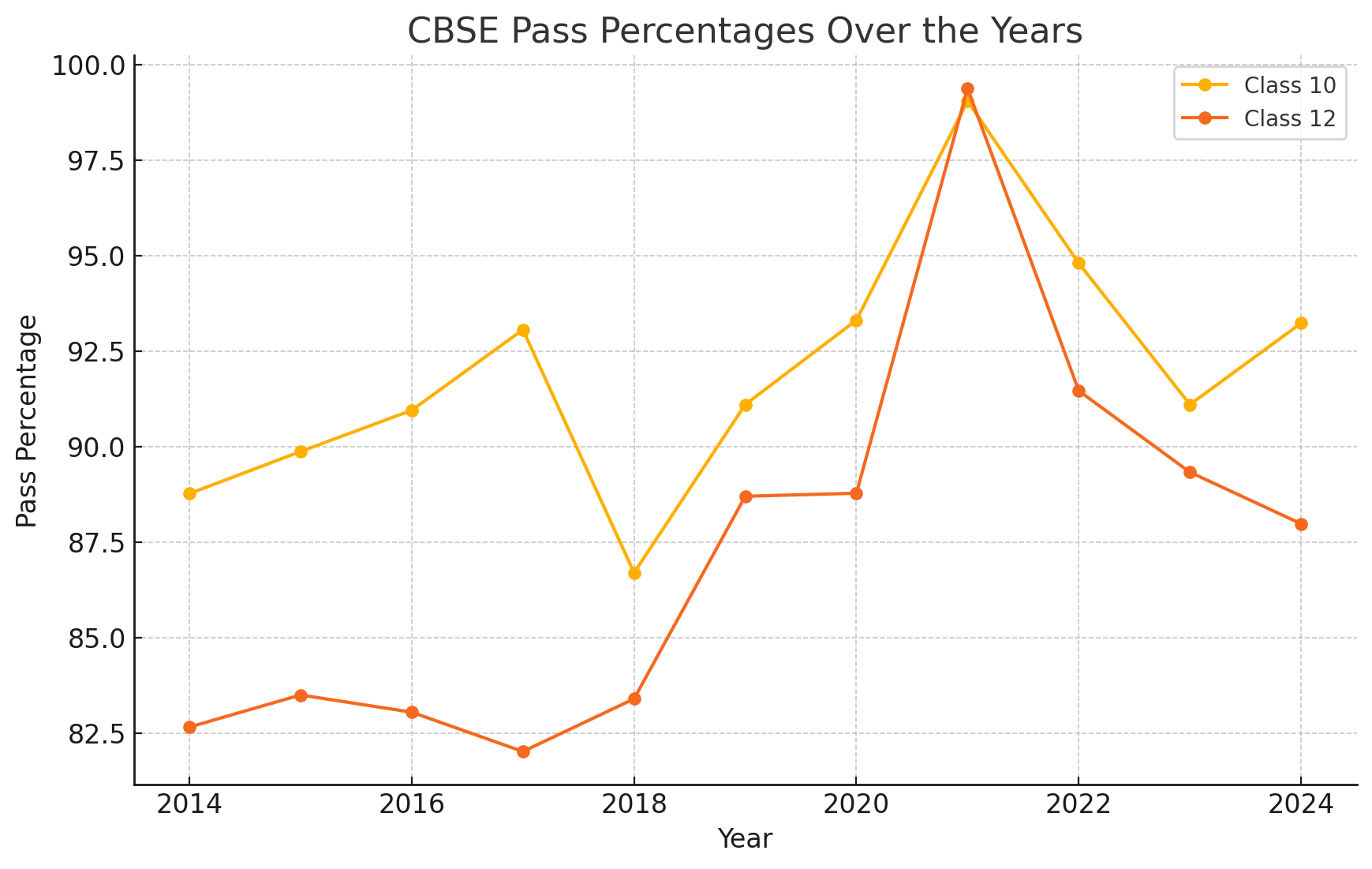
Pass Percentage Analysis (2014-2024):
- 2014-2018: The period saw gradual improvements in pass percentages, attributed to enhanced teaching methodologies and learning aids.
- 2019-2021: The impact of the COVID-19 pandemic was evident, with a significant leap in pass percentages due to the modified assessment criteria.
- 2022-2024: A stabilisation trend as the education system adapted to the new normal with hybrid learning models becoming commonplace.
The table below illustrates the pass percentages from 2014 to 2024 for Class 10th and 12th:
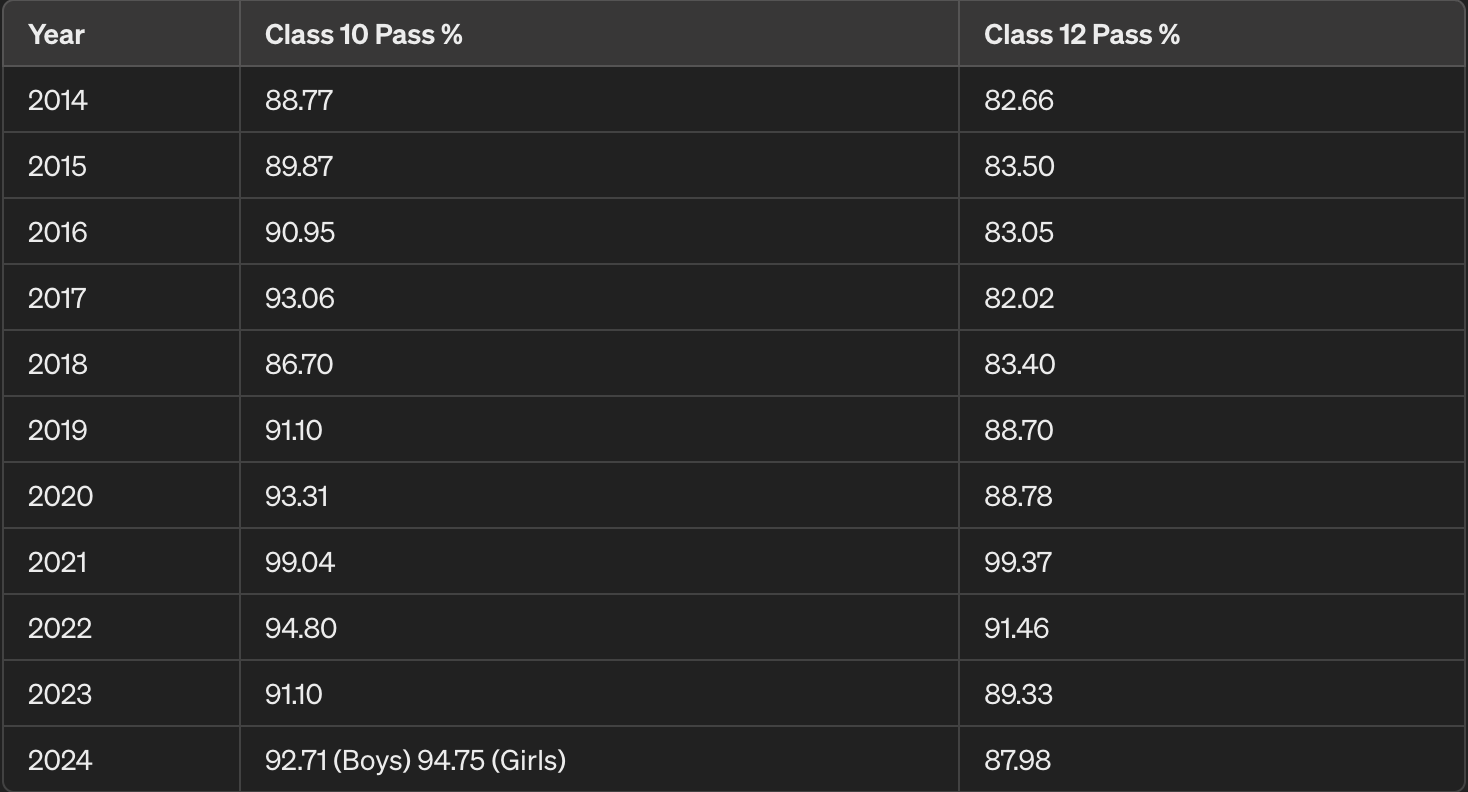
Gender-Wise Performance Breakdown
An important aspect of the CBSE results analysis is the performance based on gender. Over the decade, there has been a notable trend where female students consistently outperform male students. In 2024, the trend continued with girls securing a higher pass percentage in both Class 10th and 12th.
CBSE 2024- Class 10th Detailed Gender Performance:
- Overall Performance: 93.60%
- Girls: 94.75%
- Boys: 92.71%
- Transgender: 91.30%
- High Achievers:
- Students scoring above 95%: over 47,000
- Students scoring above 90%: over 2.12 lakh
- Compartmental Cases:
- Students placed in compartment: over 1.32 lakh

CBSE 2024- Class 12th Detailed Gender Performance:
- Overall Performance: 87.98%
- Girls: 91.52%
- Boys: 85.12%
- Transgender: 50.00%
- High Achievers:
- Students scoring above 95%: over 24,000
- Students scoring above 90%: over 1.16 lakh
- Compartmental Cases:
- Students placed in compartment: over 1.22 lakh
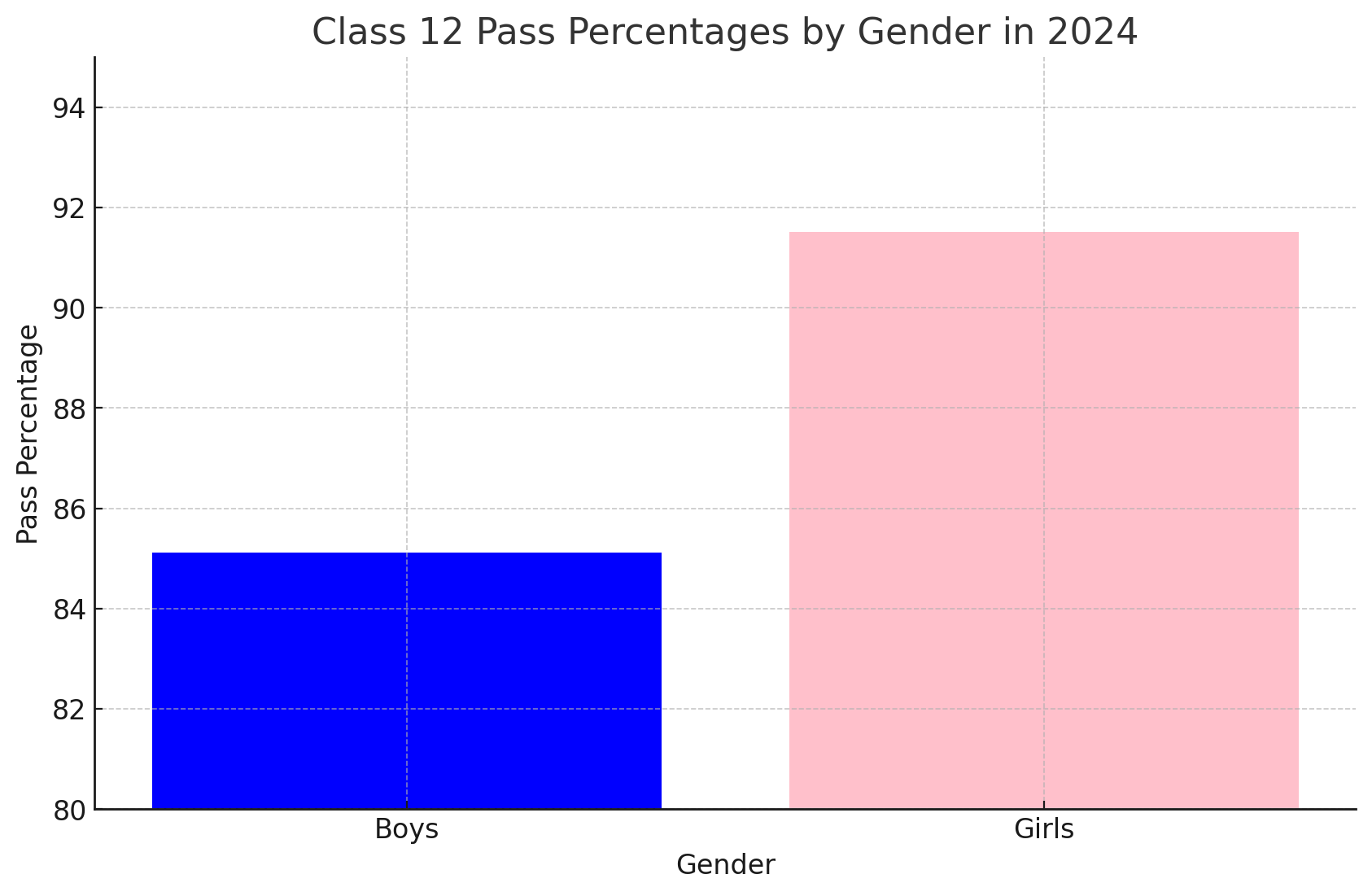
Subject-Wise Analysis for Class 12th
The subject-wise performance over the decade reveals areas of strength and subjects that require more focus and improvement.
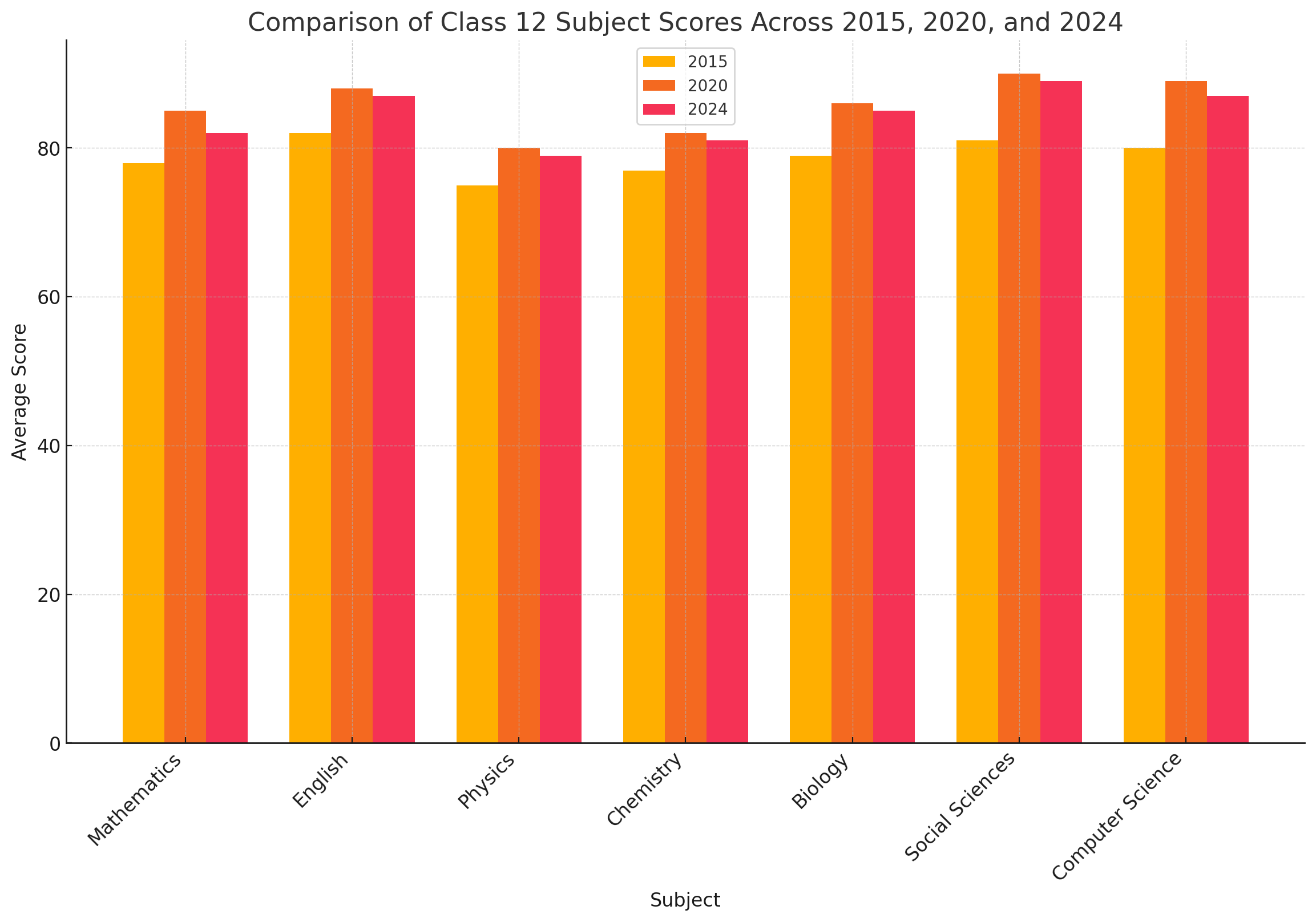
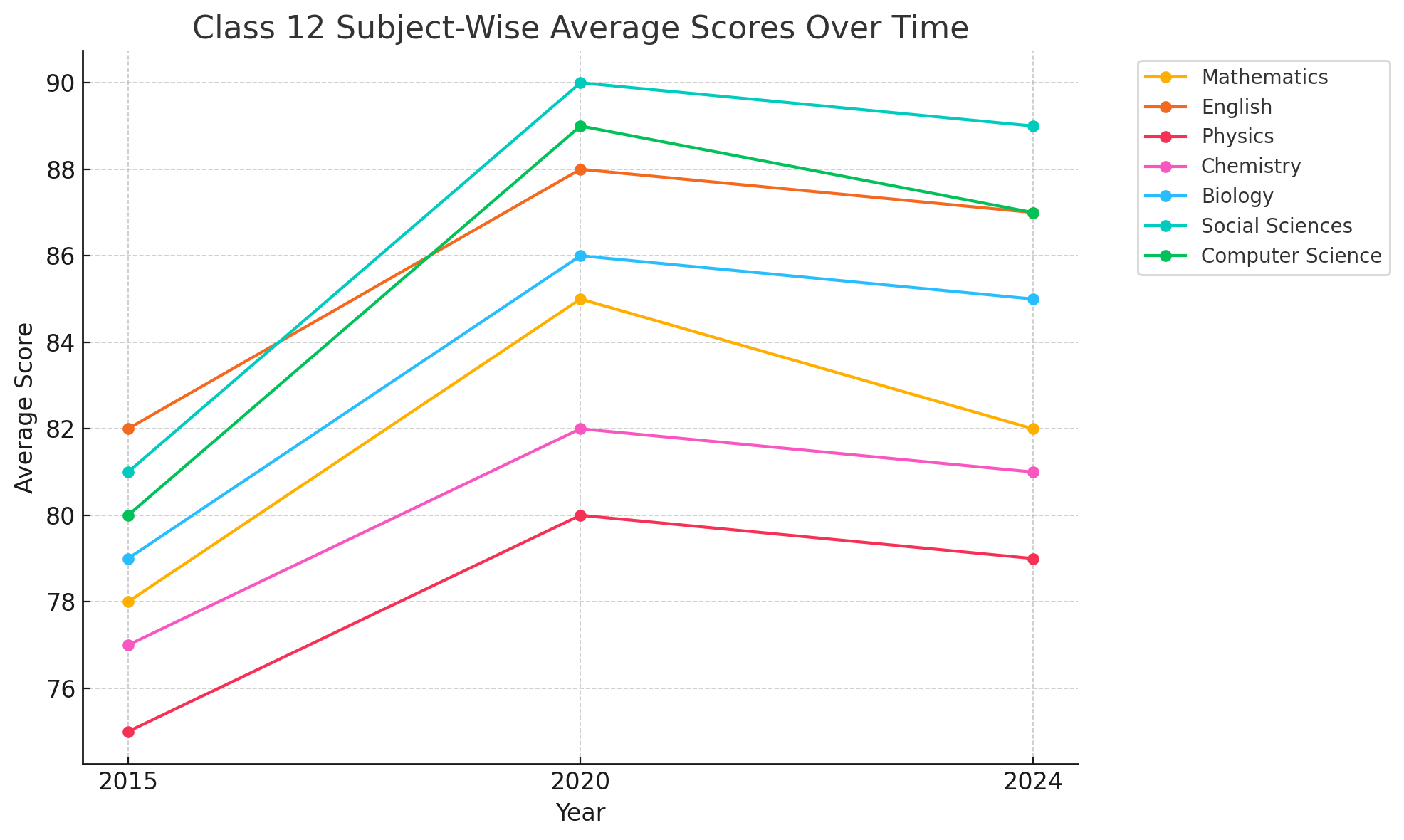
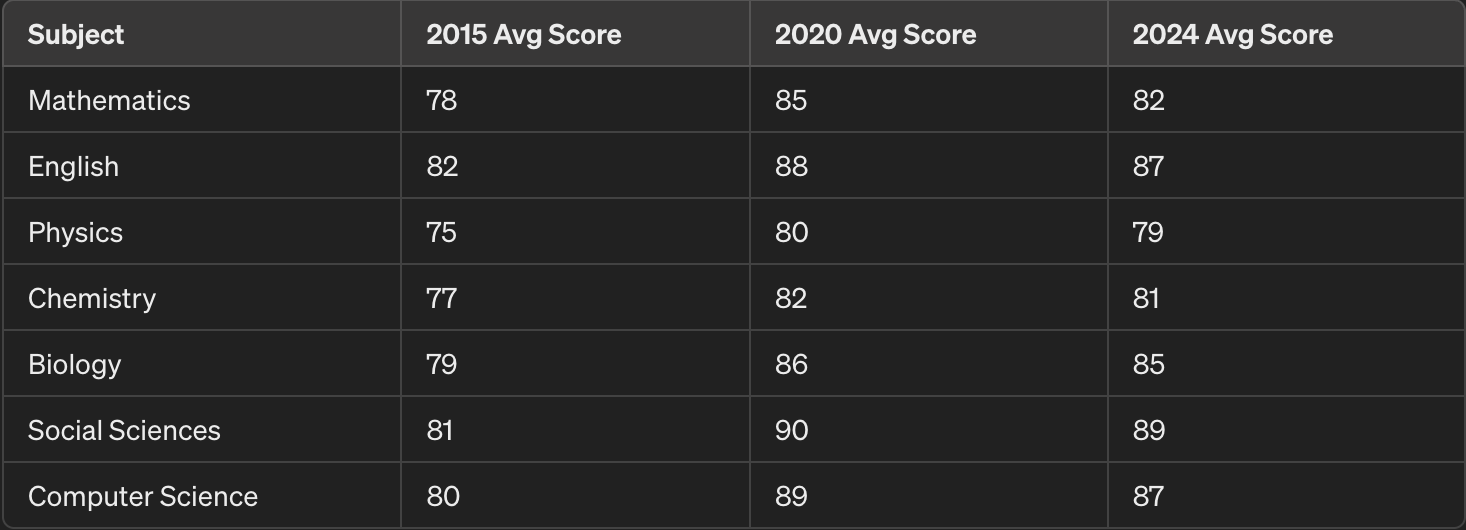
Subject-Wise Analysis for Class 10th
Similarly, the decade-long performance for Class 10th across key subjects is shown in the table below, highlighting both improvements and areas for further enhancement.



The Impact of External Factors
The past decade has also seen external factors such as the COVID-19 pandemic affecting educational processes and outcomes. The introduction of online learning platforms and hybrid teaching methods has had a significant impact on student performance, particularly in 2020 and 2021 when pass percentages saw an all-time high due to alternative evaluation criteria.
Looking Towards the Future
As we analyse these trends, it is crucial for educators, policymakers, and stakeholders to focus on adaptive strategies that embrace technological advancements and cater to diverse learning needs. The integration of technology in education, as facilitated by platforms like Inforida, can play a significant role in this transition. Inforida’s ERP solutions offer schools the capability to manage educational processes more efficiently, ensure seamless communication between teachers and parents, and provide analytical tools that help in making informed decisions based on real-time data.
Conclusion
The decade-long journey through CBSE results has provided us with valuable lessons on the resilience of the Indian education system and the potential for incorporating technology to enhance learning outcomes. With tools like Inforida, schools are better equipped to prepare for future challenges and ensure that education remains a priority in the fast-evolving global landscape.
This analysis not only reflects upon the achievements and challenges of the past but also sets the groundwork for a future where education is more accessible, inclusive, and aligned with global standards. As we move forward, embracing innovations such as Inforida will be key to achieving these goals.

